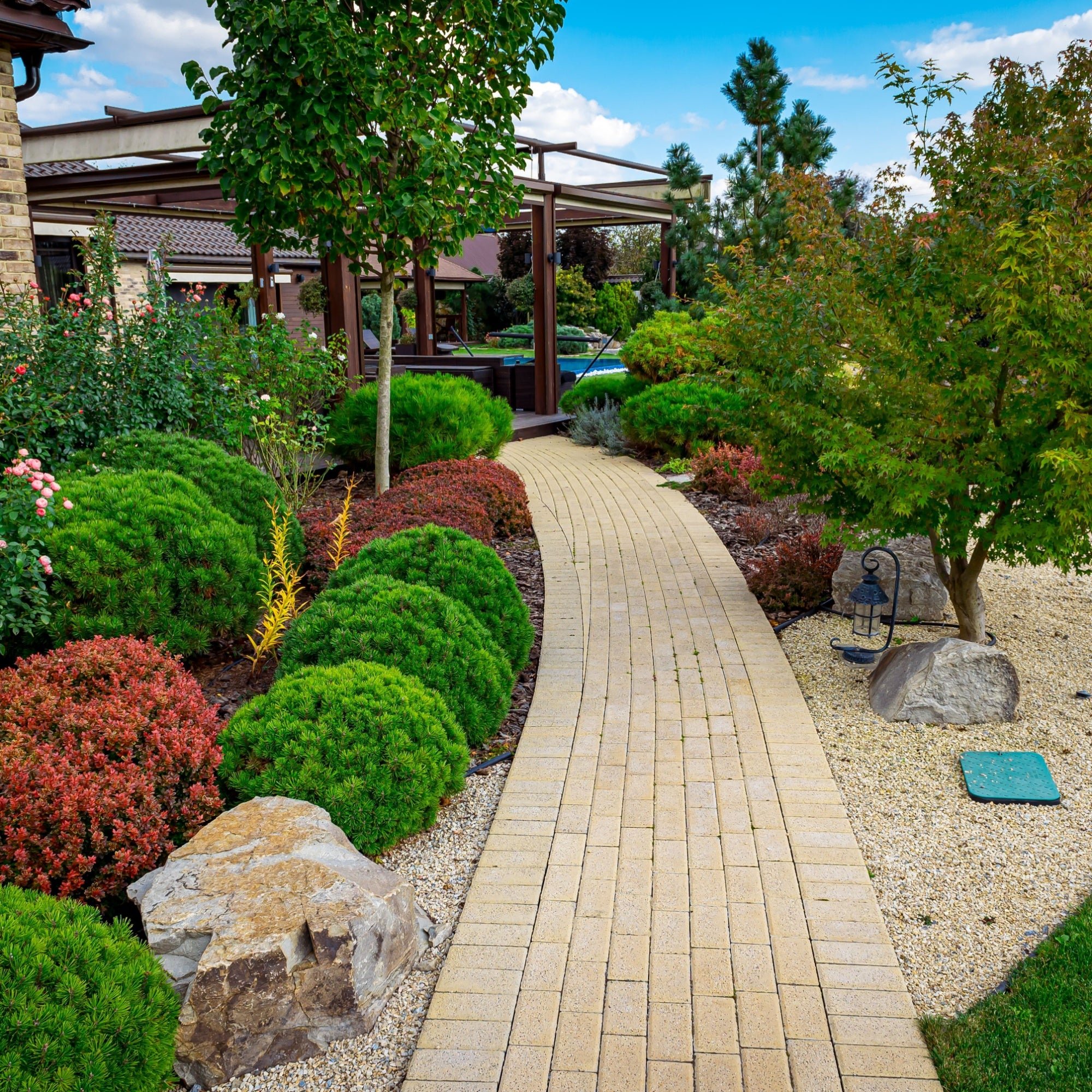Sub Collections
This collection is empty
Planting private shrubs offers many advantages for aesthetics and functionality in outdoor spaces. First and foremost, privacy shrubs act as natural barriers, providing an elegant and organic solution to creating seclusion around your property.
Unlike fences or walls, these shrubs soften the landscape, blending seamlessly with the environment while offering adequate coverage. Privacy shrubs like Privet, Burning Bushes, Viburnum, and Leyland Cypres grow dense and tall, shielding your yard from neighbors or passing cars and creating a peaceful retreat. Beyond privacy, these shrubs also serve as noise barriers, especially for homes near busy streets or bustling neighborhoods.
Privacy Shrubs are Often Evergreens
Their thick foliage absorbs sound, reducing noise pollution and making your outdoor space more tranquil. Privacy shrubs also enhance air quality, filtering pollutants and releasing oxygen, contributing to a healthier environment. This aspect is precious for urban areas, where greenery is often limited. Additionally, privacy shrubs can add significant value to your property.
Privacy Shrubs can Also Be Deciduous
They are attractive landscape features that enhance curb appeal and create a cohesive look, framing your property beautifully. Potential buyers are often drawn to a home with established landscaping, seeing it as a valuable addition that reflects care and attention.
The environmental benefits are notable, as privacy shrubs support biodiversity by providing habitats for birds, insects, and small animals. Birds, in particular, find shelter in these shrubs, adding life and movement to your garden while helping control pests naturally. Lastly, privacy shrubs are a low-maintenance investment. Many varieties are hardy, drought-resistant, and suitable for various climates, requiring minimal trimming or fertilization once established.
Privacy Shrubs Make Homeowners Feel More Secure and Reduce Noise
Choosing the right type for your region allows you to enjoy lush coverage with little upkeep, making privacy shrubs ideal for busy homeowners who still want a beautiful, private, and serene outdoor space.
Easy to Grow
Soak and Hydrate Shrub Roots
To plant bare root shrubs, start by soaking the roots in water for several hours to rehydrate them. While they soak, dig a wide hole that's twice as large as the root spread but only as deep as the roots reach—this prevents settling.
Use Soil From Hole Dug to Plant
Create a mound of soil at the bottom of the hole to support the roots and position the shrub so the crown is just at the soil level mark. Spread the roots evenly over the mound, backfill the hole with native soil, and gently tamp it down to eliminate air pockets.
Water Regularaly Until Acclimated
Water thoroughly after planting and mulch around the base to hold in moisture and regulate temperature. Be sure to keep the soil consistently damp during the establishment period.
Grow Tips For Success
Grow Tips For Shrub Success
Keep the soil around the base evenly moist, especially during the first growing season—this helps the roots settle in and stretch out. Don’t rely on overhead sprinklers; instead, water slowly at the root zone so the moisture soaks deep.
Mulch is a Shrub's Best Friend
it keeps weeds down, locks in moisture, and buffers the roots from temperature swings. Just don’t pile it up against the stem. Look for signs of stress, like yellowing leaves or drooping branches, and adjust your watering as needed. Avoid heavy pruning the first year;
let the plant focus on growing strong roots before shaping it. If it’s a flowering shrub, don’t expect a full show right away—it needs time.
With patience and a bit of attention, your new shrub will take off and reward you season after season.








